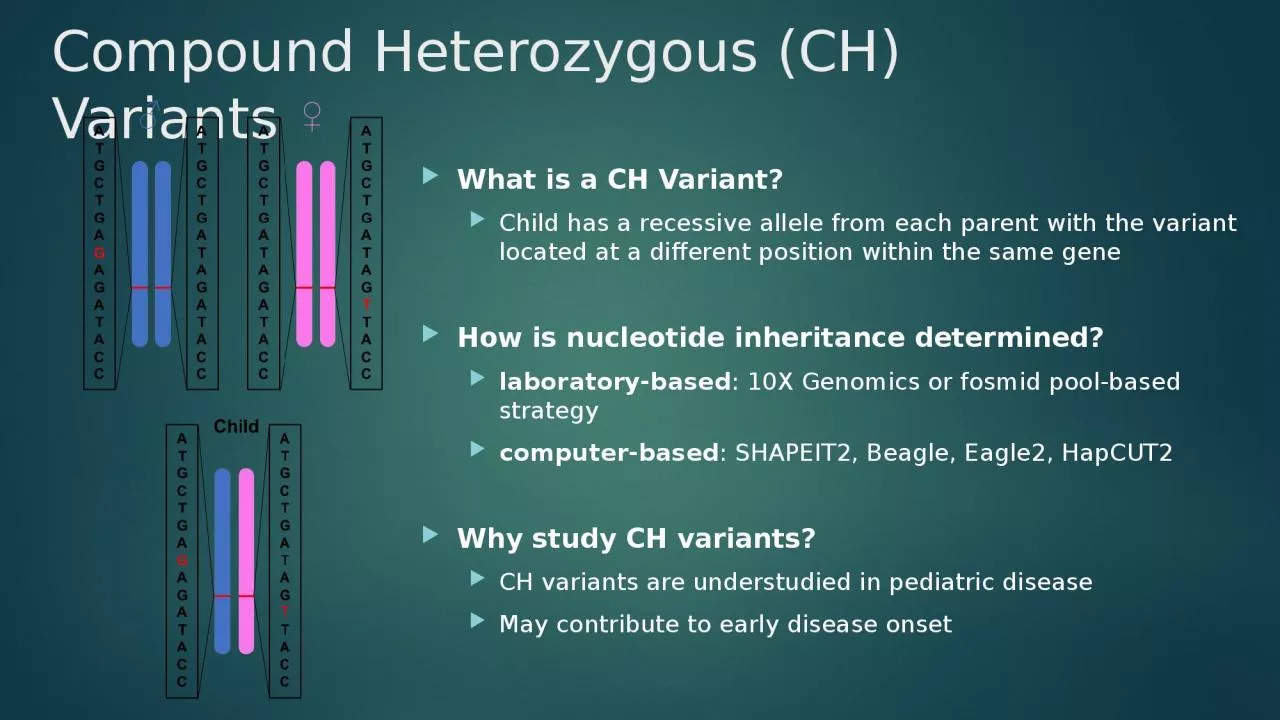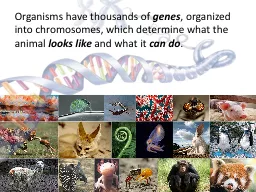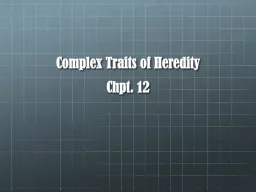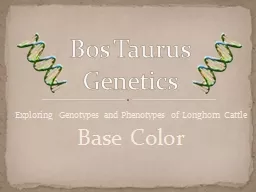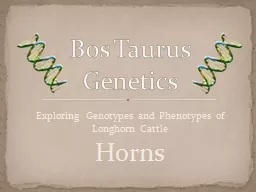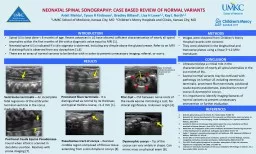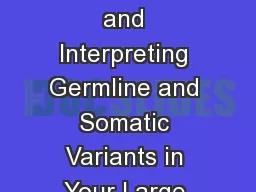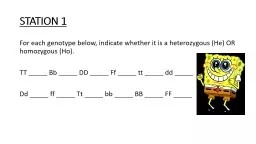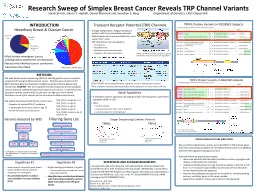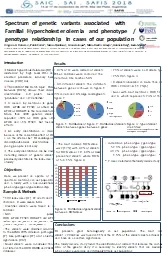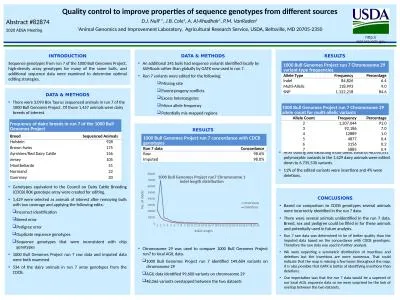PPT-Compound Heterozygous (CH) Variants
Author : lily | Published Date : 2024-02-03
What is a CH Variant Child has a recessive allele from each parent with the variant located at a different position within the same gene How is nucleotide inheritance
Presentation Embed Code
Download Presentation
Download Presentation The PPT/PDF document "Compound Heterozygous (CH) Variants" is the property of its rightful owner. Permission is granted to download and print the materials on this website for personal, non-commercial use only, and to display it on your personal computer provided you do not modify the materials and that you retain all copyright notices contained in the materials. By downloading content from our website, you accept the terms of this agreement.
Compound Heterozygous (CH) Variants: Transcript
Download Rules Of Document
"Compound Heterozygous (CH) Variants"The content belongs to its owner. You may download and print it for personal use, without modification, and keep all copyright notices. By downloading, you agree to these terms.
Related Documents

